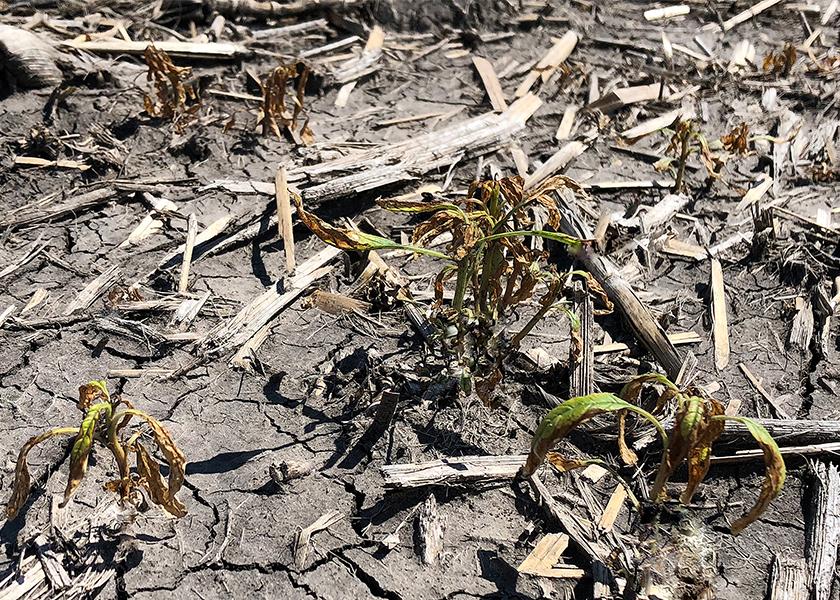5 Expert Tips to Plan a Resistance Management Strategy for Your Acres

Weed resistance is among the top challenges facing modern farmers. Resistant weed varieties continually spread to different geographies, as researchers continue discovering new cases of resistance. As a grower, you need a sound management strategy to overcome this challenge.
“Most growers understand the importance of using different chemistries throughout the season. However, because resistance is the result of several complex factors, it takes more than simply using different herbicide brands. It takes a familiarity with local weed populations and a solid understanding of herbicide classifications,” says Brett Gordon, an Enlist® field specialist based in Arkansas. “Additionally, it’s critical to employ a diverse weed control program approach rather than relying solely on one tool or system.”
Gordon says one of the first steps to creating an effective program is choosing a trait technology that provides several herbicide tolerances. Enlist E3® soybeans and Enlist® cotton varieties offer tolerances to 2,4-D choline, glufosinate and glyphosate. Enlist® corn offers the same tolerances plus an additional tolerance to FOP herbicides. Enlist One® herbicide and Enlist Duo® herbicide are the only 2,4-D herbicides approved for use with crops with the Enlist® trait.
“For example, Palmer amaranth is one of the most troublesome, resistant weeds in the South. To control it, you need to start the season with a quality burndown or tillage. Then, at planting, apply preemergence residual herbicides and overlap residuals in postapplications,” Gordon says. “To ensure good stewardship of the Enlist system, always tank-mix Enlist One herbicide or Enlist Duo herbicide with another effective mode of action to reduce the odds of developing resistance.”
Gordon says it’s essential to carefully select the herbicides you use each season to ensure you’re applying different active ingredients, from different herbicide groups in your pre- and postemergence applications. This will help strike a good balance between weed control effectiveness and resistance management.
And while there’s no one-size-fits-all prescription to prevent weed resistance, here are five reminders that can apply to nearly any farm.
1. Choose herbicide traits carefully and consider your rotations. If you rotate crops, make sure you’re not inadvertently encouraging resistance development by continually using the same active. Enlist E3 soybeans, Enlist corn and Enlist cotton varieties, for example, all offer tolerance to multiple herbicides. This gives you application flexibility and allows you to switch up active ingredients while using proven herbicide traits in back-to-back crops.
2. Site of action vs. mode of action: Know the difference and know what you’re applying. Mode of action (MOA) refers to how the herbicide controls the weed, such as inhibiting cell division; site of action (SOA) refers to the place in the plant where the action occurs, such as a specific protein. Effectively managing resistance involves using a combination of herbicides with different SOA or multiple MOA. Using multiple MOA and SOA helps protect the longevity of these weed control tools.
3. Avoid letting resistant weeds go to seed. Remove them by hand or through application of a product known to control the resistant weeds. Avoid bringing seeds from one field to another; wash or use compressed air on sprayers, tractors and other equipment before moving to a new field.
4. Don’t assume single resistance. Cross-resistance can occur. So, don’t assume if a resistant population appears, then you can simply apply a different herbicide for control; that herbicide may or may not be effective. Work with your local advisers to find the right tools to control resistant weed populations.
5. Remember that resistance is proportional. The longer a resistant weed variety is allowed to thrive in a field, a greater percentage of that total weed population will develop resistance.
In closing, Gordon says, the best resistance management plan is the one that uses a diverse program built on a foundation of weed control best practices.
“A program approach should include multiple effective modes and/or sites of action and overlapping residuals. I always advise using full herbicide rates and applying on actively growing weeds that are ideally 2 to 3 inches tall. Additionally, cultural practices, such as planting cover crops or utilizing narrow row spaces, can bolster the program,” Gordon says. “When growers deploy several robust weed control tools, this mitigates herbicide resistance, prevents new resistance development and helps extend the longevity of powerful technologies like the Enlist system.”
Learn more about managing resistance with the Enlist® weed control system by watching the video How Multiple Modes of Action Keep Resistant Weeds in Check. You also can contact your Corteva Agriscience representative for local information.
™ ® Trademarks of Corteva Agriscience and its affiliated companies. The transgenic soybean event in Enlist E3® soybeans is jointly developed and owned by Corteva Agriscience and M.S. Technologies L.L.C. Enlist Duo® and Enlist One® herbicides are not registered for sale or use in all states or counties. Contact your state pesticide regulatory agency to determine if a product is registered for sale or use in your area. Enlist Duo and Enlist One herbicides are the only 2,4-D products authorized for use with Enlist® crops. Consult Enlist® herbicide labels for weed species controlled. Always read and follow label directions. ©2024 Corteva. 019429 BR (04/24) CAAG4NLST067







